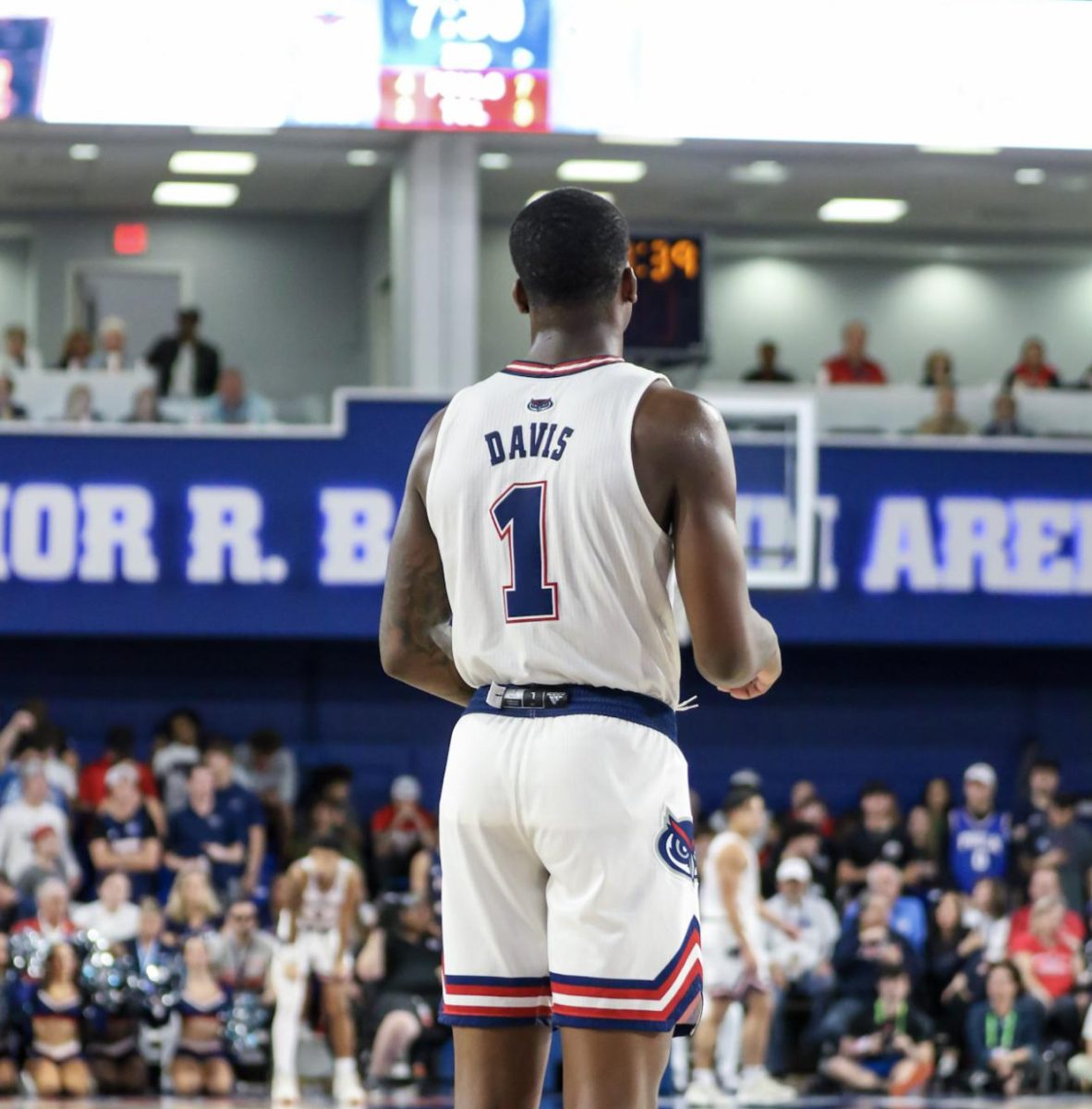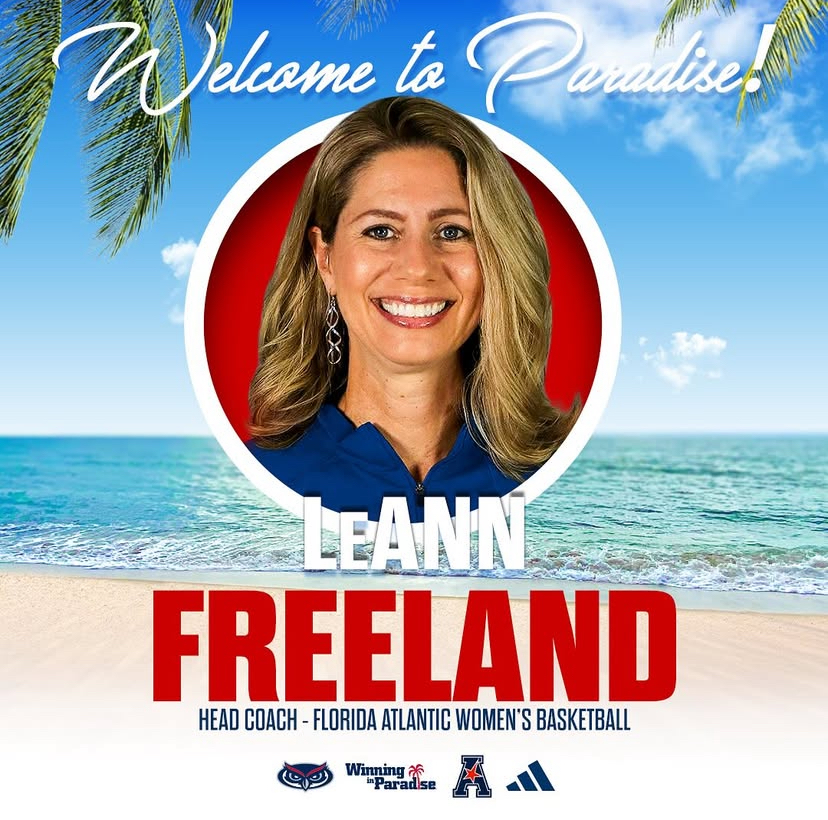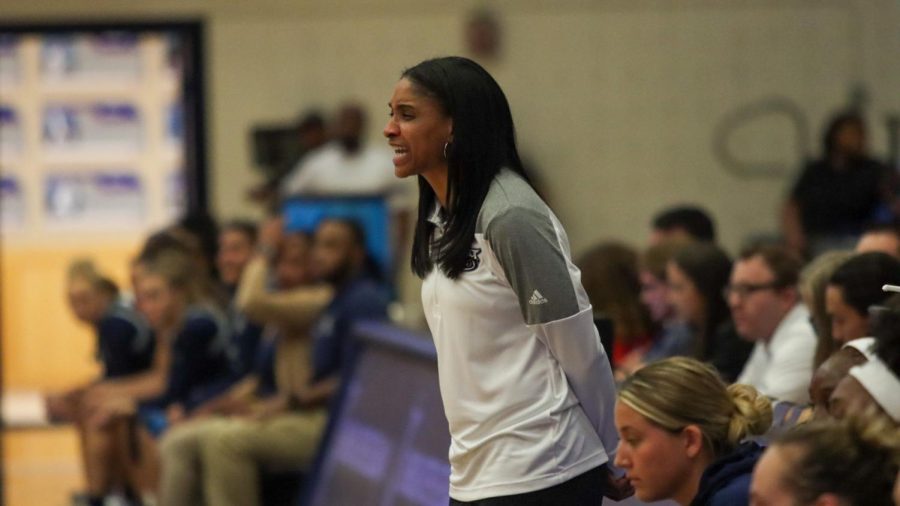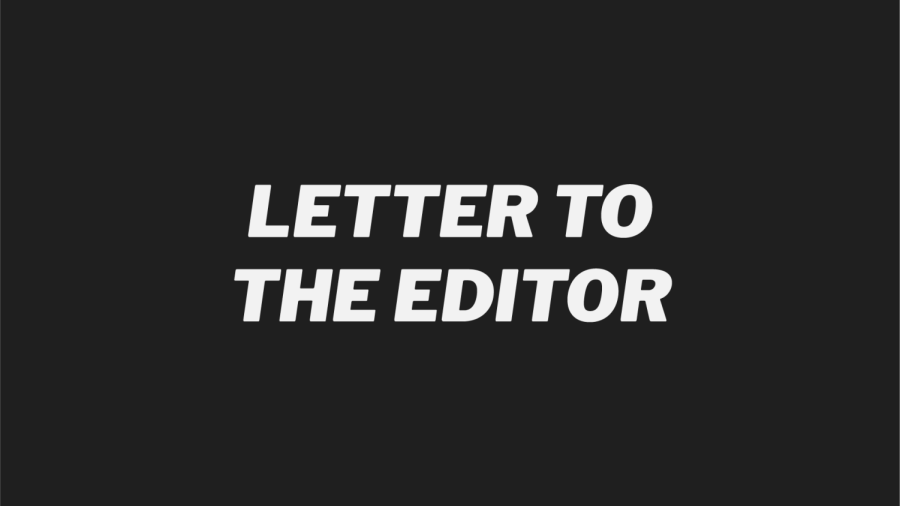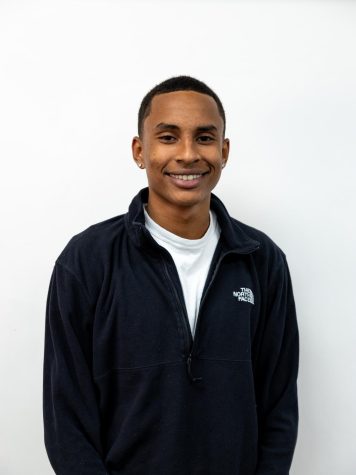As the final ten seconds of regulation dwindled, Johnell Davis scanned the floor of the Eleanor R. Baldwin Arena.
FAU had traded blows with the North Texas Mean Green all afternoon. Led by Davis’ 26 prior points, the Owls fought their way back into a 63-63 tie in the final minute after trailing for almost the entire game.
In the games’ biggest moment, FAU stayed true to the method they’ve employed in so many of their big moments before: Let Davis cook.
With five seconds to play and the ball in Davis’ hands, he drove to the left off a pick set by Vlad Goldin, stepped back and heaved up a double-clutch three-point attempt. Swish, ballgame.
FAU – 66, North Texas – 63.
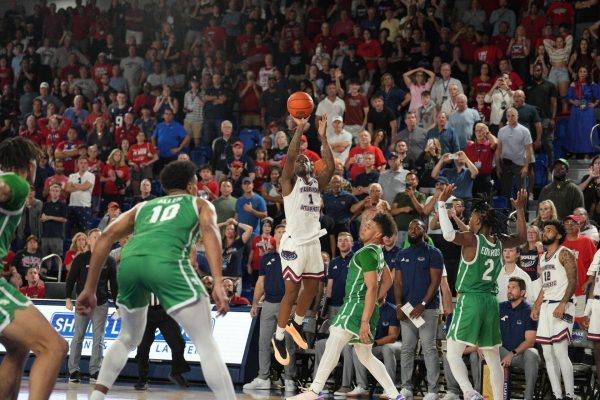
“Coach drew up a play for me to get to my left. I tried to sell the drive and step back to get a foul. I do it in practice a lot and it never goes in,” said Davis after the win. “Just happened to go in this time.”
Charged by a red-hot stretch of games by Davis, which culminated in his 28-point outing on Sunday, FAU has now won their last six and sits in first place of a chaotic race in the American Athletic Conference standings.
The Owls have been forced to find different ways to win across this six-game hot streak. Against UTSA, they relied on their largest offensive output of the season in an overtime shootout, but also prevailed in a low-scoring affair with Rice three nights later that surely had fans of tough defense grinning ear to ear.
“That’s just how it is in conference play,” said head coach Dusty May. “We have to be able to adjust to the game, play any style. Some teams are going to try to hold it. Some teams are going to try to get up and down with us. We feel like we’re equipped to win in any way.”
One constant throughout that stretch, however, has been the masterful play of Davis.
Over the past six games Davis, named AAC player of the week, is averaging a team-high 23.1 points on 53.4% shooting, 3.6 assists, but a statline does not do him proper justice.
In the biggest games and in the biggest moments, is when Davis is at his best. Many players are satisfied with accruing a pretty statline, but passing the ball off for the last shot. But then there’s Davis, who seems to need to have the ball in his hands when the lights are the brightest, and it’s usually when he’s at his best.
It’s why head coach Dusty May had the trust to leave the ball in his hands with a national championship appearance on the line almost a year ago, and why he again put the ball in Davis’ hands on Sunday.
“I like having the ball in [Johnell’s] hands late in the late game, let’s just leave it at that,” said May. “Five seconds, 10 seconds, two seconds. We have a lot of trust in this guy…When you’ve got a potential player of the year on your team, you’ve got to trust him.”
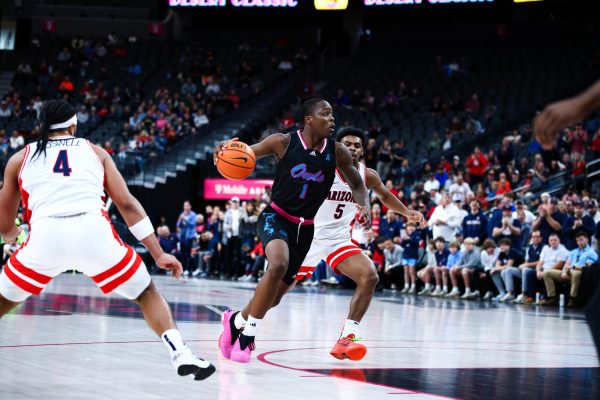
It’s also why when the NBA draft rolls around in June, teams will be kicking themselves for missing out on the opportunity to score Davis for a bargain when they had the opportunity.
His dynamic sophomore season last year, leading the Owls in scoring and powering their run through the NCAA Tournament, drew enough buzz around his name for him to test the NBA draft waters. Davis worked out for six teams, including the Boston Celtics and Milwaukee Bucks, before opting to return to FAU, where he appeared to add yet another level to his game.
In his fourth year in Boca Raton, Davis has continued to blossom. He’s again leading the Owls in scoring and has seen a significant uptick in nearly every statistical category, averaging 18.3 points per game, up nearly five from a season ago. He’s shown an even more polished ability to score from the post, mid-range and behind the three-point line from a year ago and can hang with opponents’ best scorer on defense. He’s one of the best players in college basketball and an NBA star in the making.
The best play of Davis’ career could not come at a better time for the Owls, who’ve found themselves in the midst of a closely contested race in the AAC.
If you feel like your blood pressure has been raised to previously unseen levels watching FAU basketball this season, you’re not alone. So far, nearly every game—especially in this six-game winning streak—has been a dogfight and came down to the wire.
And it’s not as if FAU is struggling to compete or can’t close out games. The story is the same all across the AAC: nail biters, night-in and night-out.
Memphis—who at one point looked poised to buzzsaw directly through their conference slate—lost their fourth straight game on Wednesday and have looked like a disaster as of late. Meanwhile, Charlotte, projected to finish 13th out of 14 teams in the AAC preseason poll, is 7-1 in conference play and looks like one of the toughest matchups in the league.
And it doesn’t end there. UAB looks tough, as always; USF is 7-1 in conference play and seems to be hitting their stride with six straight wins; North Texas just proved Sunday that they’re also tough out; all of whom FAU will face before the end of the regular season.
Any path back to a conference championship requires navigating through landmines at every step. But as tall of a task as it will be to get through the AAC, it’s equally as reassuring that they don’t appear to be in final form yet.
Offensively, they’ve recovered nicely after a couple poor shooting performances in early January, averaging 73 points per game in the past six games, but May said there’s holes left to patch on the defensive end.
“The last couple of games we’ve taken more pride in our individual and collective defense,” said May. “Still not what we need come March, but we’re trending in the right direction on that side of the ball.”
The 91 points FAU allowed in regulation in their 112-103 overtime win at UTSA is the second most they’ve allowed all season, which they responded to by holding Rice and North Texas to less than 70 points in their last two outings.
That defense will be put to the test again when the Owls host the Tulsa Golden Hurricane on Sunday afternoon.
“Their ability to draw fouls and score in the paint, their speed and athleticism at the guard spot… They just haven’t found ways to close some games,” May said on what Tulsa does well. “So we know it’s going to be a challenge.”
Cameron Priester is a staff writer for the University Press. For information regarding this or other stories, email cpriester2020@fau.edu or tweet him @PriesterCameron


